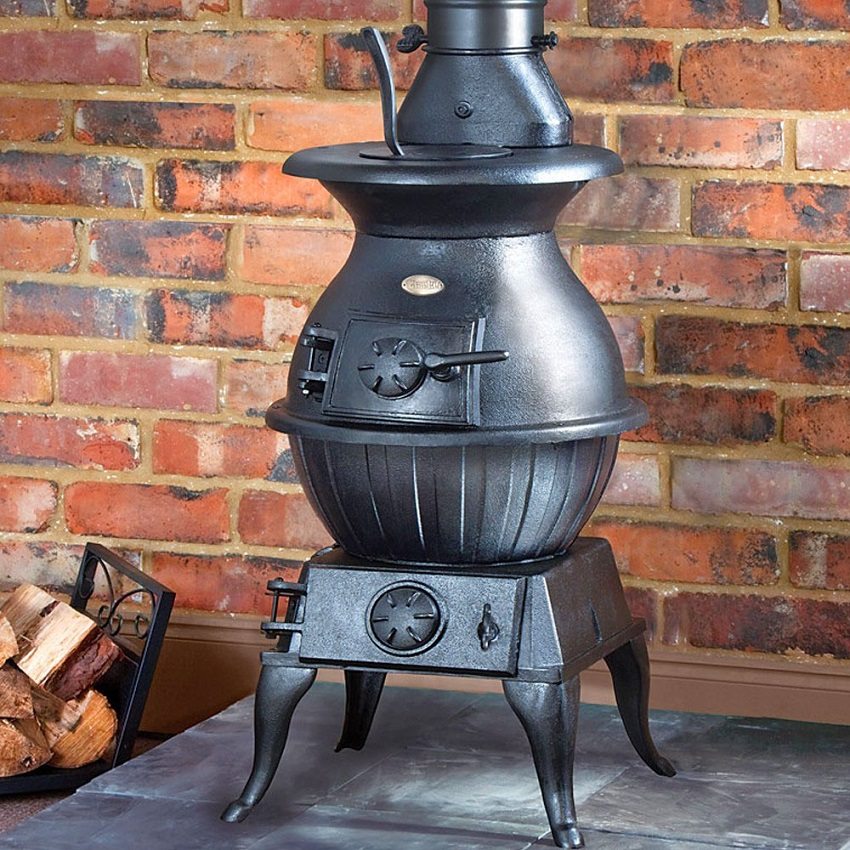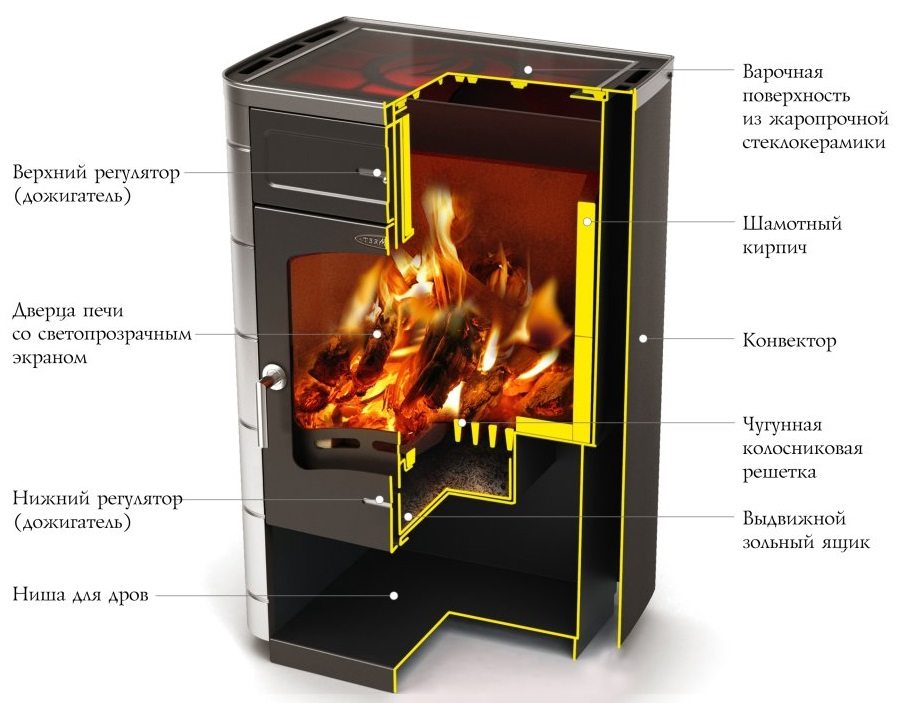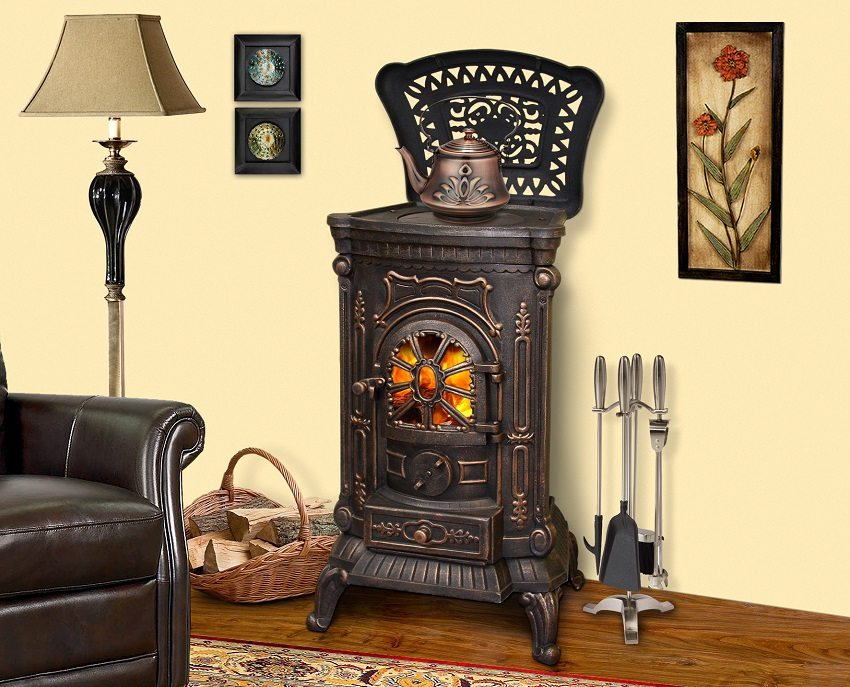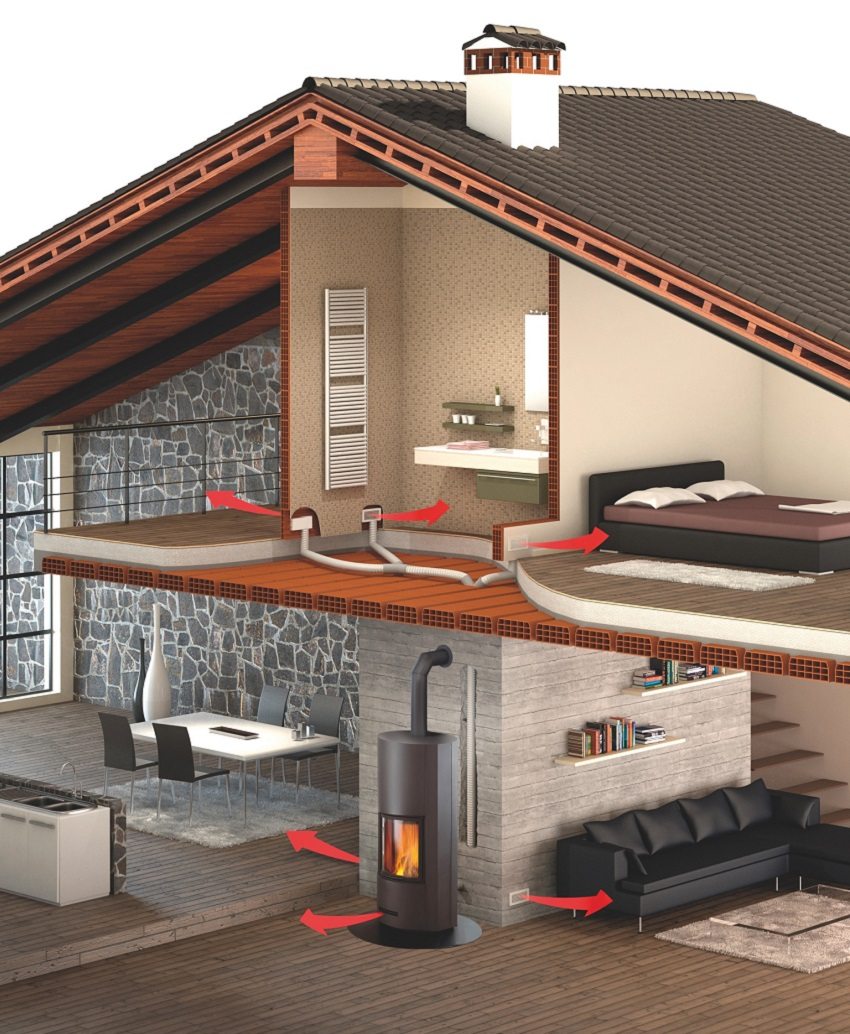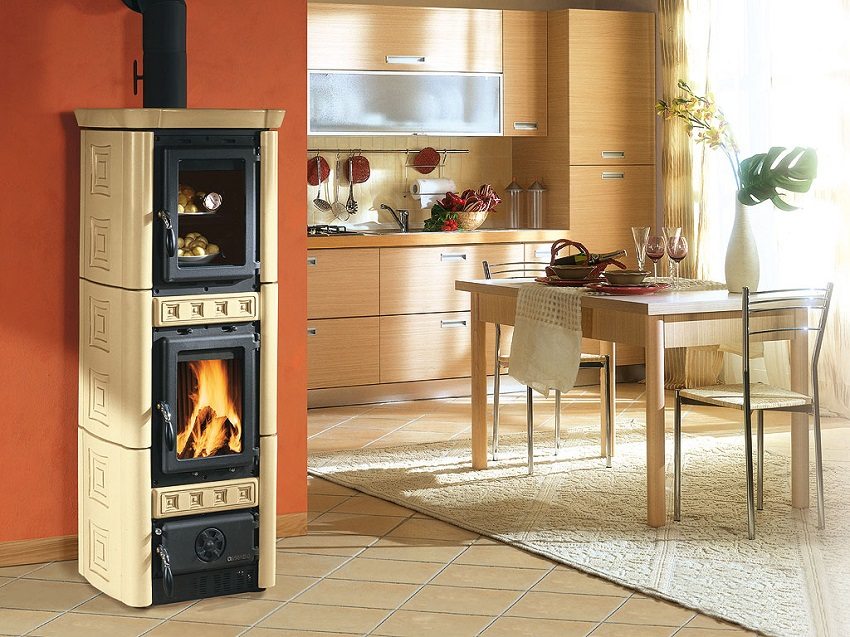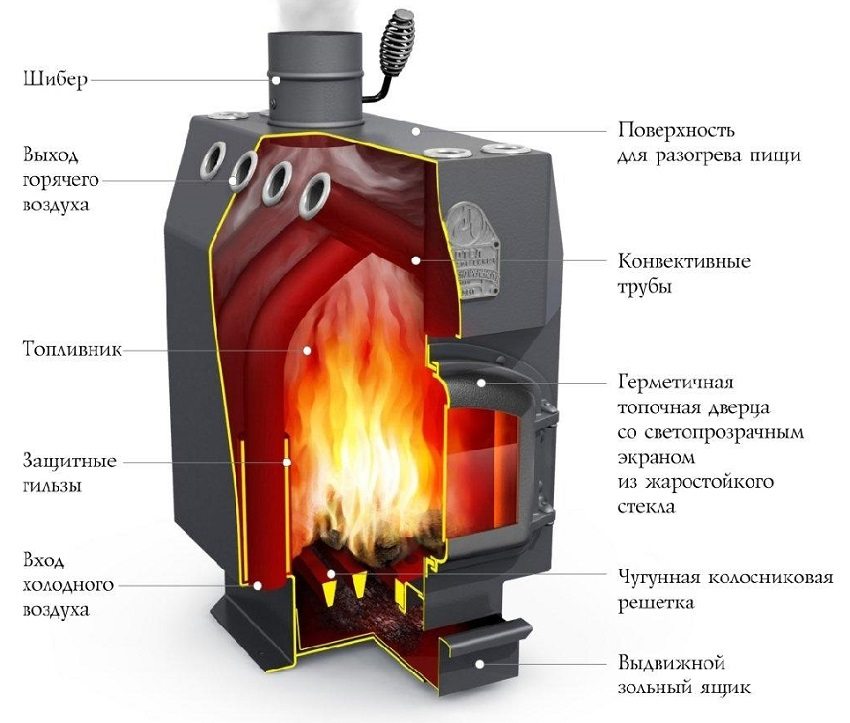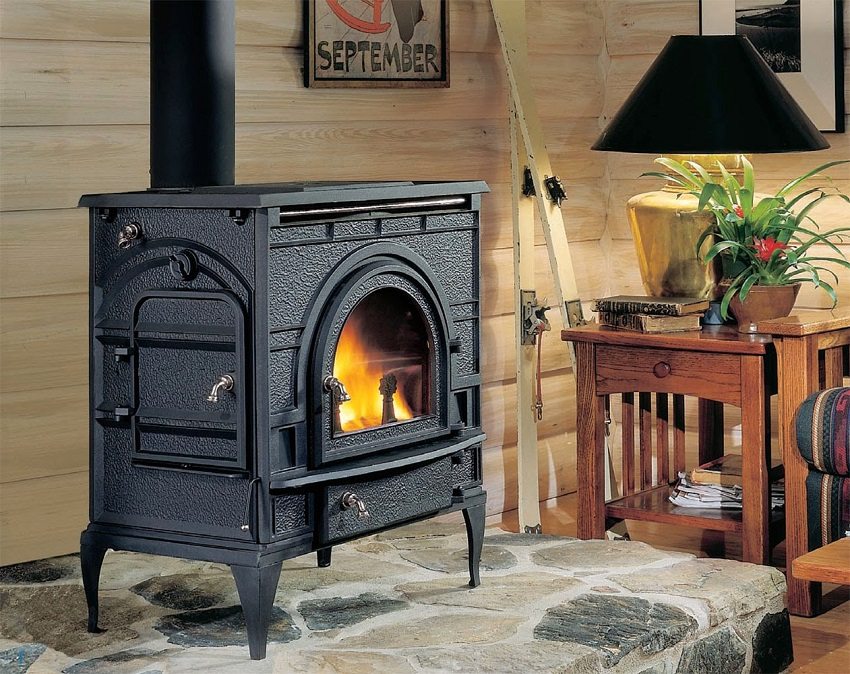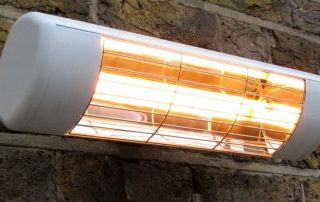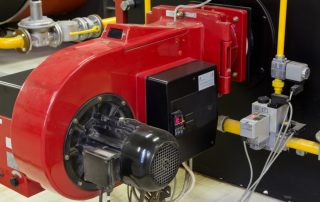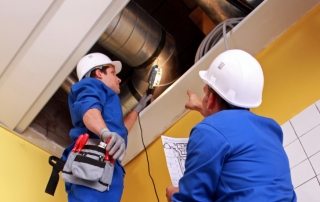Firewood is the oldest fuel used by man. To this day, they are irreplaceable in places where there is no access to other energy sources. Until now, in the village, where there is no gasification, wood stoves are the main source of heat for heating homes. The reason for this is the high cost of electricity. Conventional natural burning wood-burning stoves have low efficiency. To obtain heat, they must be constantly fed by wood. A completely different matter is the use of home stoves on wood burning for a long time.
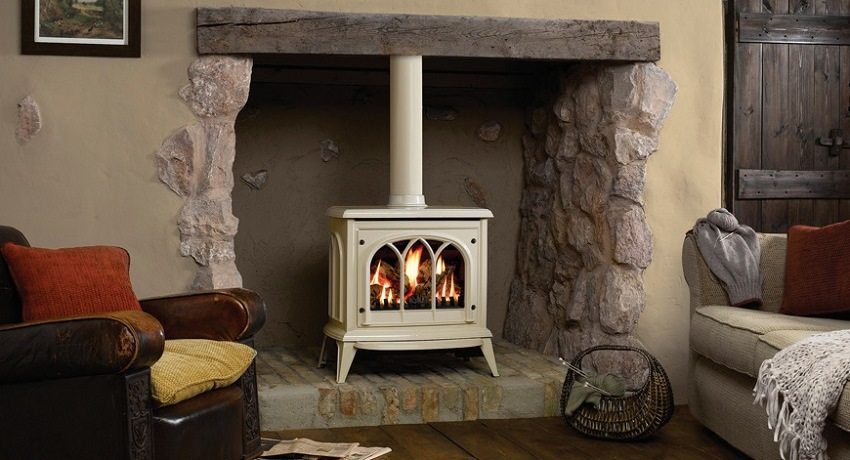
Wood fired oven easily creates warmth and comfort in any home
Content [Hide]
Types and designs of wood-burning stoves for home
These heaters, unlike conventional stoves, burn fuel very slowly. The wood just smolders, not burns. This effect is achieved by regulating the air flow. To achieve this, the design provides for complete sealing of the combustion chamber. Air is forced into it in the required amount. In addition, a large amount of firewood is put into the firebox, and they burn from top to bottom. All this provides a very long burning time, which significantly saves fuel, and the efficiency of such furnaces reaches 80%.
There are several types of wood burning stoves for home. They all have their own design features. Depending on the types of fuel that can be used, they are classified into:
- Strictly wood-fired. They only work with wood.
- Solid fuel. They work on any solid fuel: wood, coal, fuel briquettes, sawdust.
- Gas-fired. Besides firewood, gas can be used as fuel.
- Electric wood. The design includes an electric boiler.
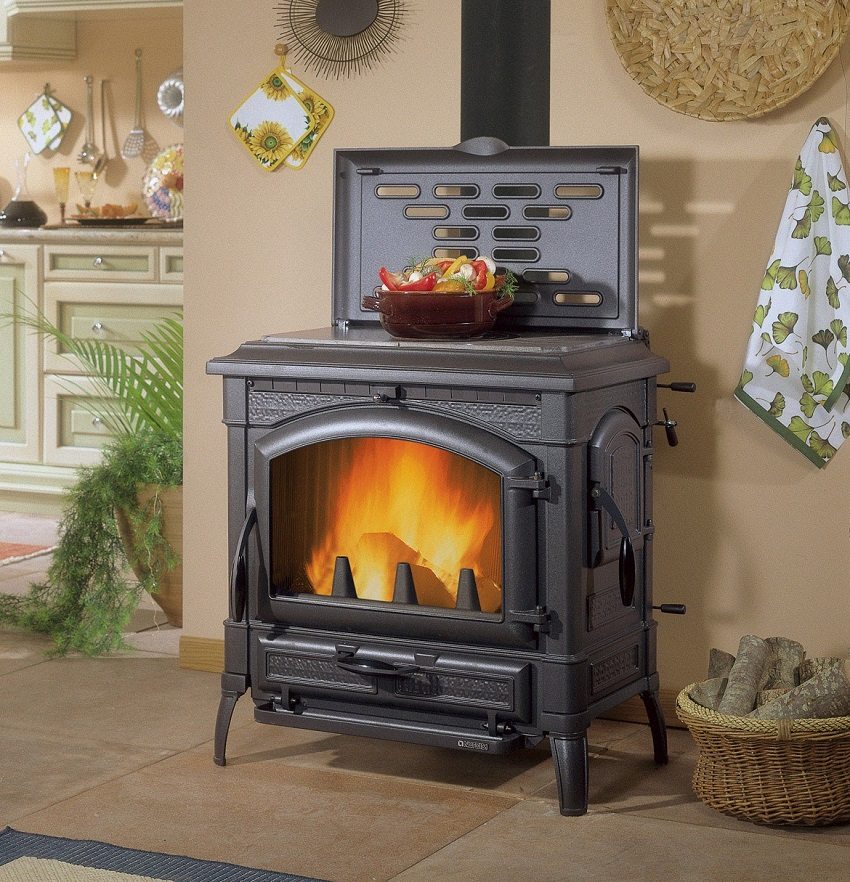
Fireplace stove with stove for cooking
At the same time, you need to understand that the effect of long burning is achieved only when using solid fuel.
By the method of combustion, one can distinguish direct-flow furnaces and gas generators. The first type involves obtaining energy only from the combustion of solid fuel. The second type is more complicated. In it, the combustion chamber has two sections. Firewood is loaded into one of them, and in the other, the afterburning of gases released during the combustion of firewood occurs. This design is more efficient, economical and more efficient.
By their design, furnaces can be:
- ordinary;
- with a stove for cooking;
- with an oven;
- fireplace stoves.
By the method of heat transfer, furnaces are:
- convection - cold air is taken from the floor, passes along the heated walls of the combustion chamber and in hot form comes out in the upper part of the body directly into the atmosphere, heating it;
- with liquid heat exchanger - a heat exchanger is installed in the combustion chamber or on a pipe, to which a liquid heating system is connected, mounted throughout the house.
In addition, furnaces differ in power and purpose.
Helpful advice! For maximum effect, it is necessary to lay well-dried large firewood or special briquettes in the oven. This will increase the duration of burning and allow more heat to be released from a unit volume of firewood.
Advantages and disadvantages
Long-burning wood-burning home stoves have their own advantages and disadvantages. The positive aspects include:
- small size and low weight;
- no need for a foundation;
- high efficiency (from 75 to 85%);
- duration of operation at one gas station (at least 10 hours);
- low fuel consumption;
- firewood is added during combustion;
- regulated combustion of gases;
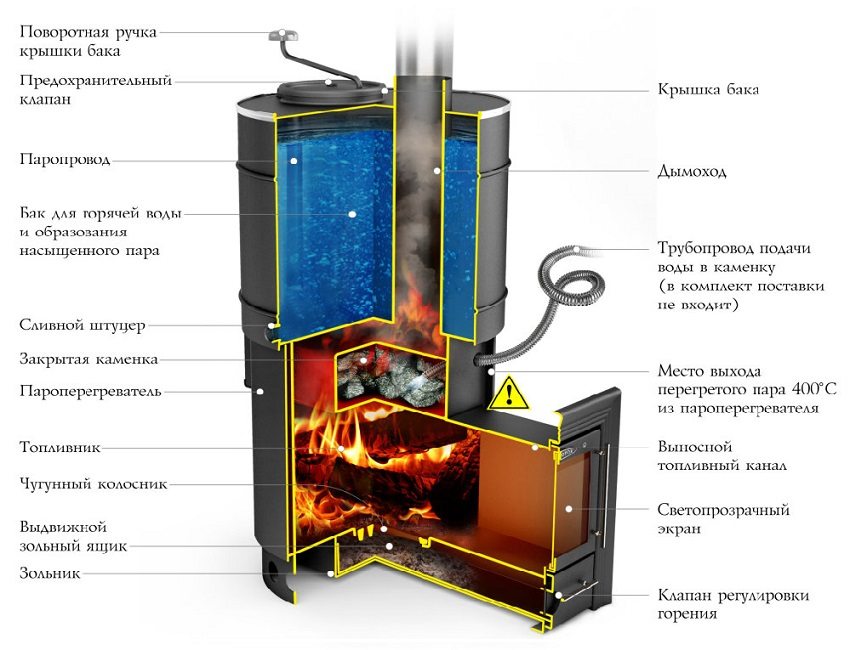
Wood burning fireplace stove with water tank for bath or sauna
- any solid fuel can be used;
- long (up to 50 years) service life, especially for cast iron models;
- not demanding on the premises;
- the ability to transfer to another room;
- a large number of stoves with an attractive design, which allows the device to fit into any interior;
- low cost of many models;
- affordable and environmentally friendly fuel for everyone.
Among the disadvantages are:
- none of the existing long-burning wood-burning stoves for home can operate on liquid fuel;
- complex initial setup;
- special requirements for the chimney device (the pipe must be straight, without a single bend, since the draft is small);
- low-temperature gases are capable of forming condensate in the chimney, which requires additional design solutions for its removal;
- requires constant and careful care.
Helpful advice! Any solid fuel stove with long burning needs preventive maintenance. It must be turned on at full capacity once a week. This allows condensate to be burned out and prevents slagging.
How to calculate the power and install a wood stove
Depending on the model and manufacturer, the stoves have different power and functionality. If the device will be used not only for heating, but also for cooking, it is necessary to choose a model with a hob. If, in addition to a purely heating function, the device is intended to become an interior decoration, then it is best suited fireplace stove.
The power of the stove can be calculated only by knowing the volume of the heated room. The instructions for any oven model have information about what area the device can heat. However, it is good to know that, for example, a fireplace stove consumes 3 kg. fuel per hour to generate 9 kW of energy. This amount can heat 60 m2 rooms with a ceiling height of 3 m.With a standard 2.5 meter ceiling height, 1 kW of energy is sufficient for 10 m2 area.
Installation of stoves for home on wood burning long burning is carried out according to the following algorithm:
- Since all furnaces of this type are made of metal, they heat up very much, unlike brick ones. Select a suitable location to install the unit. It should be far enough away from walls, especially wooden ones. The stove should not be in the path of people and obstruct the passage.
- After choosing a place, you need to equip it. For this, a refractory layer must be mounted on the floor. It can be made from bricks, ceramics, concrete or heat-resistant sheet materials. Its area should be slightly larger than the furnace occupies.
- If wooden walls are close to the stove, they must also be insulated with refractory material.
- The chimney must be made straight from the sandwich pipe. In places of passage through interfloor and attic floors, insulation is required with materials that protect wooden surfaces from heating.
- After all these works, the stove is installed in place and connected to the chimney.
If the furnace is without a water circuit, then the installation work can be considered complete. Otherwise, the installation of the heating system is necessary. It is constructed according to the general rules from metal or plastic components. The device has an inlet and an outlet. The corresponding pipes of the heating system are attached to them.
Helpful advice! The best material for making long-burning stoves is cast iron. Thick walls made of this material can store heat for a long time. Such a furnace, although it is more expensive, is not subject to corrosion and has a more attractive appearance.
The use of long-burning wood-burning stoves for home allows not only to create the comfort of "live" heat in the room, but also to save a lot on energy resources.
